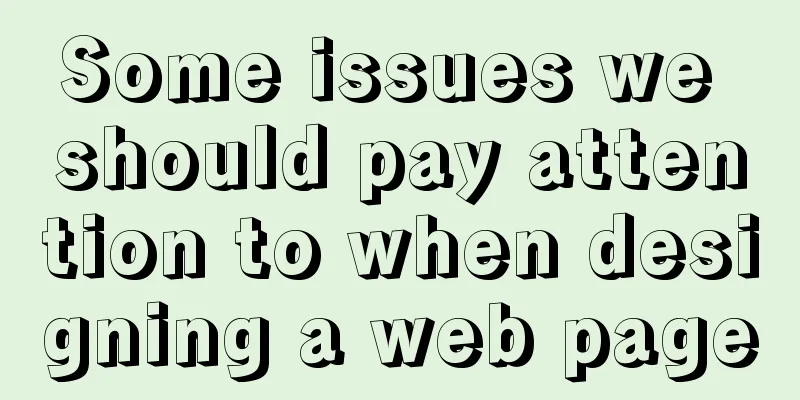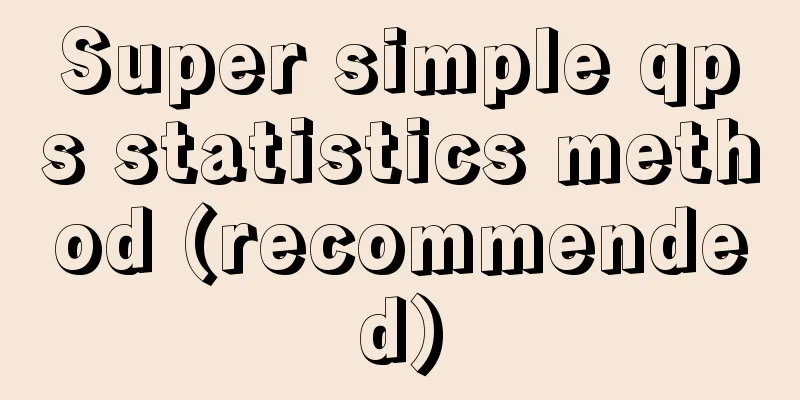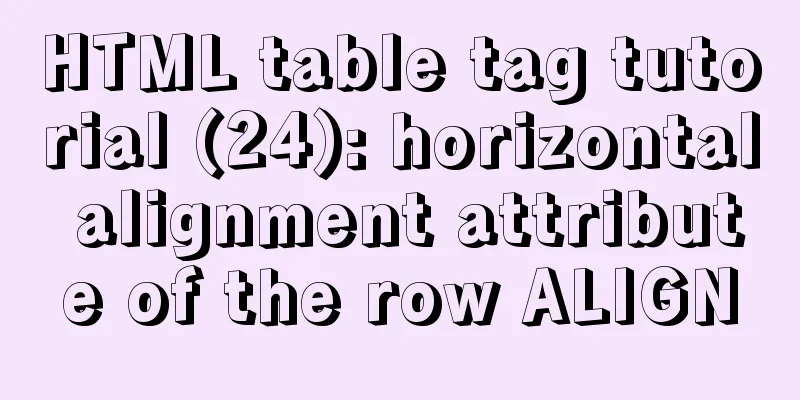Some issues we should pay attention to when designing a web page

|
Web design, according to personal preferences and the content of the web page, the layout of the design is ever-changing. Changing the background will give you a different feeling. There is no fixed pattern for what kind of layout looks good. Based on my own experience, I have summarized the following points: 1. The content of the web page should be unconventional. Looking around, many personal homepages on the Internet are simply "grocery stores". The content is all-encompassing and the subject matter is all the same. Everyone has a "software download" and a "web navigation", and there is not a trace of "freshness" from beginning to end. Therefore, when designing a web page, we must put effort into selecting materials. The materials should be selected as “few” and “fine” as possible, and must highlight the “new”. If we can insist on updating them every day, I believe such a webpage will be welcomed by everyone. 2. After the content is determined, don't rush to start making the page. We should plan and design the entire layout, think carefully about what the theme is and how to arrange the content, and then it is best to draw the framework on paper - this is typesetting. Layout is very important. Without a clear main line, the entire layout will be a mess. 3. After the main line of the entire page is organized, we must supplement it to ensure the integrity and integrity of the page. For example, the title of the page should be concise and clear so that people can understand at a glance whether the website has what they need; when encountering long texts, separate them with lines so that people can see them clearly at a glance; key paragraphs should be highlighted so that people can obtain information selectively; leaving a mailing address or E-mail address on the web page will facilitate communication between users and you; when using trademarks on the web page, they must not infringe on copyrights; the above are some of the details that need to be considered. At the same time, special consideration should be given to the convenience of future maintenance and updating of the website. 4. When creating a website, the content should not be the same as that of other websites. Adding some of your own articles , comments and opinions will make people trust you more and respect you. For example, translate some English tutorials, write some software usage, and analyze some example production processes. After all, it is a personal homepage, and it should reflect your personality and style. Let everyone understand and accept your views, which is the spirit of a personal homepage! 5. The production of images should take into account both size and aesthetics . Generally speaking, if you master the powerful tool Photoshop and combine it with other special image software such as Ulead, Paint Shop Pro, etc., it is not difficult to produce beautiful and exquisite pictures. But pictures serve the content of the homepage. Don’t make the entire page too colorful and overshadow the main content. You can find many pictures, galleries and animations on the Internet. 6. Don't use large-scale Java programs. If you can use javascript instead, try not to use Java . Because currently Java's running speed is so slow that it is unbearable, and often makes viewers impatient to wait for the entire page to be displayed, so your careful design will be ineffective! 7. Single image should not exceed 30k , total image per page should not exceed 60k (generally). According to statistical analysis, webpages with no more than 60k images per page have acceptable download speed. All images must be "slimmed down". Small images (100x40) can generally be controlled within 6k, animations can be controlled within 15K, and larger images can be "split" into small images. It is also crucial to use jpg and gif formats properly. Use jpg for bright colors and high resolution, and use gif for monotonous colors and low resolution. Images in gif89a format can be displayed interlaced during download. 8. The download of pictures is slow. If we want users to know the content of the picture before it is downloaded, we must annotate the picture. In this way, when the image is not displayed, the annotation can help the viewer know what the picture is about, so that the user can make a choice, whether to wait, or whether to click. This is especially convenient for pure text viewers. 9. When designing a web page, be sure to observe it using the resolutions of 640×480 and 800×600 respectively . Many browsers use a 640x480 resolution, and although a Web page may look attractive at a high resolution of 800x600, it may look dull in 640x480 mode. With a little effort, design a web page that will display well at different resolutions. |
<<: How to write a picture as a background and a link (background picture plus link)
>>: Several ways to solve CSS style conflicts (summary)
Recommend
HTML reuse techniques
HTML reuse is a term that is rarely mentioned. Tod...
What is the difference between HTM and HTML? What is the difference between HTM and HTML?
In the process of learning web design, I did not ...
Tutorial on binary compilation and installation of MySql centos7 under Linux
// It took me a whole afternoon to install this, ...
Detailed explanation of the organizational structure diagram case of Vue's vue-tree-color component
Table of contents npm Install the loader Import P...
The difference between html form submission action and url jump to actiond
The action of the form is different from the URL j...
Differences and usage examples of for, for...in, for...of and forEach in JS
for loop Basic syntax format: for(initialize vari...
Two ways to create SSH server aliases in Linux
Preface If you frequently access many different r...
Detailed explanation of mysql partition function and example analysis
First, what is database partitioning? I wrote an ...
Solution to the problem that docker logs cannot be retrieved
When checking the service daily, when I went to l...
Solution to the low writing efficiency of AIX mounted NFS
Services provided by NFS Mount: Enable the /usr/s...
Detailed example of inserting custom HTML records in Quill editor
It is already 2020. Hungry humans are no longer s...
How to use CSS to pull down a small image to view a large image and information
Today I will talk about a CSS special effect of h...
This article summarizes the implementation methods of 6 load balancing technologies (summary)
Load balancing is a commonly used device in serve...
How to quickly import data into MySQL
Preface: In daily study and work, we often encoun...
How to configure Nginx to distinguish between PC or mobile phone access to different domain names
The new official website is online, but the exper...









